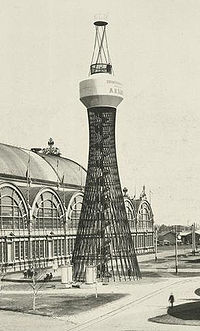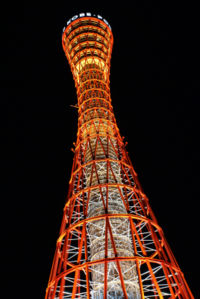- Estructura hiperboloide
-
Estructura hiperboloide
La primera estructura hiperboloide erigida en el mundo fue una torre de celosía en acero, de belleza asombrosa, localizada en la localidad de Polibino, región Lipetsk. La torre hiperboloide fue construida y patentada en 1896 por el gran ingeniero y científico ruso Vladimir Shújov. Las estructuras hiperboloides fueron construidas posteriormente por muchos arquitectos famosos, como Antoni Gaudí, Le Corbusier u Oscar Niemeyer.
El famoso ingeniero español Eduardo Torroja diseñó más tarde la torre de agua de cáscara delgada en Fedala[1] y la azotea de Hipódromo de la Zarzuela en forma de hiperboloide.
Contenido
Referencias
Bibliografía
- Elizabeth Cooper English: “Arkhitektura i mnimosti”: The origins of Soviet avant-garde rationalist architecture in the Russian mystical-philosophical and mathematical intellectual tradition”, a dissertation in architecture, 264 p., University of Pennsylvania, 2000.
- Rainer Graefe: “Vladimir G. Šuchov 1853-1939 - Die Kunst der sparsamen Konstruktion.”, S.192, Stuttgart, DVA, 1990, [1]
Véase también
- Vladimir Shújov
- Torre de Shújov
- Torre de Shújov en el Río Oka
- Antoni Gaudí
- Templo de la Sagrada Familia
- Eduardo Torroja
- Hipódromo de la Zarzuela
- Torre de refrigeración
- Catedral de Brasilia
Enlaces externos
 Wikimedia Commons alberga contenido multimedia sobre Estructura hiperboloide.Commons
Wikimedia Commons alberga contenido multimedia sobre Estructura hiperboloide.Commons- La Torre de Shújov
- Estructura hiperboloide de la Sagrada Família
- Invention of Hyperboloid Structures
- Hiperbólica Torre de Control, Ricardo Bofill Levi, Aeropuerto de Barcelona
- The Origins of Modernism in Russian Architecture
Categorías: Ingeniería civil | Ingeniería estructural | Elementos estructurales | Construcción | Torres
Wikimedia foundation. 2010.


